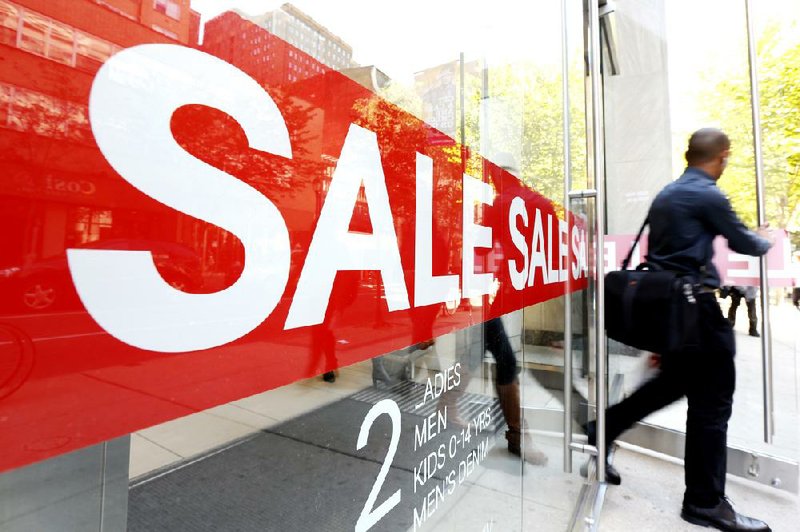WASHINGTON - Consumers increased their spending slightly last month as their income grew at the fastest pace in six months, the Commerce Department said Friday.
Spending on goods and services rose 0.3 percent in August. That’s up from a 0.2 percent gain in July.
Income rose 0.4 percent in August, the best gain since February and up from a 0.2 percent July increase. Private wages and salaries rose 0.5 percent, while the government wages and salaries rose 0.2 percent.
The government figures would have been higher if not for forced federal furloughs that reduced wages and salaries by $7.3 billion.
Consumer spending drives 70 percent of economic activity. Many analysts say the increases are not enough to accelerate economic growth in the third quarter from the 2.5 percent annual rate in the April-June quarter.
“With more money coming in, consumers spent a little, just a little, more freely,” said Jennifer Lee, senior economist at BMO Capital Markets.
Rising home values and stock market gains that are bolstering net worth are cushioning the effects of this year’s payroll-tax increase and giving households the means to sustain purchases.
“The consumer is still in a holding pattern, waiting for better employment prospects,” said Russell Price, senior economist at Ameriprise Financial Inc. in Detroit. Still, “I was encouraged to see the improvement in wages and salaries.”
Americans grew more pessimistic this month about the economy, their own finances, and government budget policies, according to a survey of consumer confidence released Friday.
The University of Michigan said its final reading of consumer sentiment dropped to 77.5 in September from 82.1 in August. It was the second straight decline after confidence reached a six-year high of 85.1 in July.
Paul Ashworth, chief U.S. economist at Capital Economics, predicts the economy is growing at an annual rate of 2 percent to 2.5 percent in the July-September quarter.
But other economists are less hopeful. Peter Newland, an economist at Barclays, said that the modest increase did not change Barclays’ forecast for growth at a 1.7 percent rate.
Americans saved some of the extra money they earned last month. The personal savings rate edged up to 4.6 percent of after-tax income, a slight improvement from 4.5percent in July.
An inflation gauge tied to consumer spending increased 1.2 percent over the past 12 months, well below the Federal Reserve’s 2 percent target. Some Fed officials have argued that the central bank should not start reducing its support for the economy until inflation has risen closer to the Fed’s target.
A recent spike in interest rates and mixed signals from the job market were key reasons the Fed held off last week on reducing its $85 billion-a-month in bond purchases. The Fed also scaled back its economic growth estimate for this year and next. Fed policymakers said at the conclusion of their Sept. 17-18 meeting that they want to see more evidence of an improvement in employment and the economy.
“Conditions in the job market today are still far from what all of us would like to see,” Chairman Ben Bernanke said after a meeting of the Federal Open Market Committee. “The committee has concern that rapid tightening of financial conditions in recent months would have the effect of slowing growth.”
There are some signs that consumers may be better positioned to step up spending soon, economists said.
The number of people seeking unemployment benefits has sunk to its lowest point in six years because few companies are laying anyone off anymore. That has led some economists to predict that employers added 200,000 jobs or more jobs in September - the most since February.
And gasoline prices are falling again. The average national price for a gallon of regular gas on Thursday was $3.43. That’s 11 cents cheaper than a month ago and the lowest since January.
Information for this article was contributed by Martin Crutsinger of The Associated Press and by Lorraine Woellert, Renee Dudley and Chris Middleton of Bloomberg News.
Business, Pages 31 on 09/28/2013

